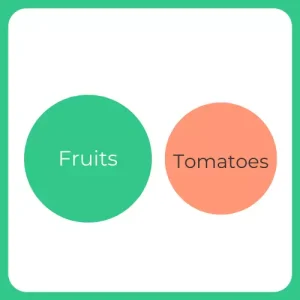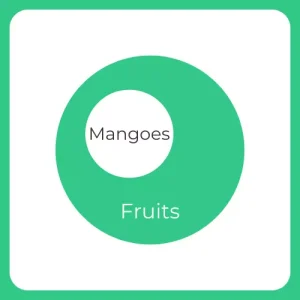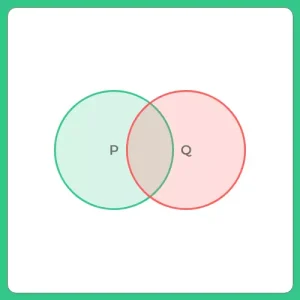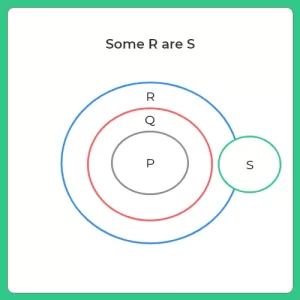Logical Menu
- Number Series
- Coding and Number Series
- Letter and Symbol Series
- Logical Sequence of Words
- Analogy and Classification Pattern
- Statements and Conclusions
- Statements and Assumptions
- Data Sufficiency
- Visual Reasoning
- Cube and Cuboid
- Cube
- Dice
- Directional Senses
- Blood Relations
- Odd Man Out
- Syllogism
- Arrangements
- Seating Arrangements
- Coding Deductive Logic
- Objective Reasoning
- Selection Decision Tables
- Attention to Details
- Inferred Meaning
- Cryprtarithmetic
- Get Off-campus Drive Updates
- Get Hiring Updates
- Contact US
PREPINSTA PRIME
Tips Tricks And Shortcuts To Solve Syllogism Questions
Tips and Tricks to Solve Syllogism Problems
The syllogism is kind of a logical argument, where we have to give a genuine reason to arrive at a conclusion, which is based on two or more statements that are mentioned in the question.Go through this page to learn Tips and Tricks to Solve Syllogism questions quickly.
Shortcut, Tips and Tricks of Syllogism to remember
Since Syllogism comprises of some statements, each of which is divided into two parts that are a subject and a predicate.
Subject– a Main matter of discussion.
Predicate– the part which states something about the subject.
There are four types of statements, each of which is mentioned below with the help of an example:
Type 1: All P is Q
It can be portrayed with the help of a Venn diagram:
From this we can definitely conclude that:
- All P’s are Q’s
- Some P’s are Q’s
- And some Q’s are P’s
But we cannot be sure that:
- All Q’s are P’s
- Some Q’s are not P’s
Type 2: No P’s are Q’s

From the diagram we can definitely conclude that:
- Some P’s are Q’s
- Some Q’s are P’s
Possible conclusion:
- All P’s are Q’s
- All Q’s are P’s
- Some P’s are not Q’s
- Some Q’s are not P’s.

Prime Course Trailer
Related Banners
Get PrepInsta Prime & get Access to all 200+ courses offered by PrepInsta in One Subscription
Also Check Out
Type 3: Some P’s are Q’s
From the diagram we can definitely conclude that:
- Some P’s are Q’s
- Some Q’s are P’s
Possible conclusion:
- All P’s are Q’s
- All Q’s are P’s
- Some P’s are not Q’s
- Some Q’s are not P’s.

Hence from the above diagrams we’ve summarized some quick Tips and Tricks to be memorized, to Solve Syllogism questions:
Definite cases: (For questions containing only two items)
- All+ All= All
- All+ No= No
- All+ Some= No conclusion
- Some+ All= Some
- Some+ No= Some Not
- Some+ Some= No conclusion
Possible cases:
1)If all P’s are Q’s that does not mean that all Q’s are P’s which means that some Q’s cannot be P.
All P’s are Q’s—->Some Q’s are not P’s
2)If some Q’s are not P’s——->There is possibility that all P’s are not Q’s
3)If some P’s are Q’s——->There is possibility that all P’s are Q’s and all Q’s are P’s
Shortcut, Tips and Tricks to Solve Syllogism using various methods:
1.) Verbal Method
Test takers relatively less use the verbal way of explaining syllogism questions. The test taker understands the set of premises and based on the ability to understand the assumptions, verbally derives a conclusion. The method is useful for less complicated questions.
For example
Statement I: Some human is rich.
Statement II: All rich are men.
Conclusion:
1. Some human is a man.
2.All men are rich.
Options:
- The only Conclusion I follows
- Only Conclusion II follows
- Either conclusion I or Conclusion II follows
- Neither conclusion I nor Conclusion II follows
Answer:1
Explanation:
From the above statements it is clear that some humans are rich and all rich are man, therefore there is a possibility that some some humans are man.
2.) Venn Diagram method
The Venn diagram method allows the test taker to solve the questions diagrammatically. This method is very useful in solving syllogism questions. This is illustrated well with the help of some bullet points mentioned below:
- Firstly we have to draw the diagram based on the given statements.
- Then we have to check which conclusion follow the given information, with the help of the diagram.
- If the Conclusion is fulfilling one condition but is not accomplishing the other conditions represented in the diagram, then it will not be considered as a conclusion.
- Hence the final conclusion should be made only if it follows all the possible conditions.
For example
Statement I: All P’s are Q’s
Statement II: All Q’s are R’s
Statement III: Some R’s are S
- All P are R
- No Q are R
- All S are R
Options:
- The only Conclusion I follows
- Only Conclusion II follows
- Either conclusion I or Conclusion II follows
- Neither conclusion I nor Conclusion II follows
Answer:1
Explanation:
The last diagram is the final one, and based on this we will draw conclusions.
Conclusion:
- All P are R
- No Q are R
- All S are R
Conclusion 1 is true as Circle representing P is completely inside circle representing R
Conclusion 2 is false as circle representing Q is completely inside circle representing R.
Therefore there is no possibility that no Q are R.
Conclusion 3 is also not true because some part of S is some part of R.
Therefore we can say that only conclusion 1 follows.
Hence option 1 is the correct one.



For Example
Statements :
No singers are actors.
Some actors are artists.
No artist is artisan.
Conclusions :
I. Some artists are not singers.
II. Some artisans are not actors.
Options
1.Neither conclusion I nor conclusion II follows
2.Only conclusion I follow
3.Only conclusion II follow
4.Both the conclusions follow
Explanation :
Analyzing Conclusion I : Some artists are not singers.
Some artists are actors (reverse of Statement 2) + No actor is singer (reverse of Statement 1)
= Some artists are not singers. Clearly, Conclusion 1 follows.
Analyzing Conclusion II :
Some actors are artists + No artist is artisan
= Some actors are not artisans. Since reverse of an Partial Negative statement is not possible, Conclusion 2 doesn’t follow.
For Example
Statements :
All wells are rivers.
All seas are rivers.
Some rivers are not seas.
Conclusions :
I. Some wells are not seas.
II. Some seas may not be rivers.
Options
1.Neither conclusion I nor conclusion II follows
2.Only conclusion I follow
3.Only conclusion II follow
4.Both the conclusions follow
Explanation:
Analyzing Conclusion I : Some wells are not seas.
Neither Statement 1 nor 2 is a negative statement.
So, negative conclusion between the classes of ‘wells’ and ‘seas’ is not possible. Hence, Conclusion 1,doesn’t follow.
Analyzing Conclusion II : Some seas may not be rivers.
In Statement 3 : ‘Some rivers are not seas’. Here, we are not sure of the elements of the class ‘seas’. So, it means that ‘Some seas may not be rivers’.
Conclusion 2, hence, follows.
Also Check Out
Get over 200+ course One Subscription
Courses like AI/ML, Cloud Computing, Ethical Hacking, C, C++, Java, Python, DSA (All Languages), Competitive Coding (All Languages), TCS, Infosys, Wipro, Amazon, DBMS, SQL and others
- Directional Senses – Questions | Formulas | How to Solve Quickly | Tricks & Shortcuts
- Blood Relations – Questions | Formulas | How to Solve Quickly | Tricks & Shortcuts
- Odd Man Out – Questions Formulas | How to Solve Quickly | Tricks & Shortcuts
- Directional Senses – Questions |
Formulas |
How to Solve Quickly |
Tricks & Shortcuts - Blood Relations – Questions |
Formulas |
How to Solve Quickly |
Tricks & Shortcuts - Odd Man Out – Questions
Formulas |
How to Solve Quickly |
Tricks & Shortcuts

 Apply For Jobs
Apply For Jobs Get Hiring Updates
Get Hiring Updates




Login/Signup to comment